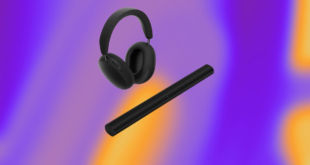October is breast cancer awareness month and about 1 in 8 women in the US will develop breast cancer during her lifetime. Besidesskin cancer, breast cancer is the most commonly diagnosed cancer in women. Although death rates from breast cancer have thankfully declined over the last several years, it’s still important to check yourself for breast cancer.
Because even in a world with high-tech doctor’s offices and plenty of ways to talk to a doctor online, taking care of yourself starts with you. By setting aside just five minutes every month to do a self exam, you can increase the likelihood of early detection if you do have cancer. The earlier you detect cancer, the earlier a doctor can treat it. And when it comes to breast cancer, early treatment is the key to a good prognosis.
Read more: What Is Breast Density and Why You Should Know Yours
How to perform a breast cancer self-exam at home
1. Simply look at your breasts in the mirror. Look from different angles, with your arms down and then raised.
What you should see:
- Breasts that are smooth and don’t show any visible signs of distortion
- The usual size, shape and color of your breasts
Signs to look out for:
- Changes in skin texture, such as dimpling, puckering or bulging
- Changes in the position of either nipple
- Any redness, splotches or other signs of a rash
- Abnormal swelling
- Any signs of fluid coming from either nipple
2. Feel your breasts while lying down, and then again while standing up. Using the pads of your first two or three fingers, make circular motions about the size of a quarter along the entire surface of your breasts (top, sides, front, underneath) and near your armpit. Use light, medium and firm pressure to feel the different layers of tissue.
What you should feel:
- The usual consistency of your breasts
- Whatever is “normal” in the different regions of your breasts
Signs to look out for:
- Lumps or hard masses in your breast tissue
- Thickening or fullness that feels different than the surrounding tissue
- Unusual warmth
- A nipple that has become inverted (pushed in instead of pointing out)
Self-breast exams aren’t a surefire way to detect breast cancer — only medical testing, such as mammograms, can do that — but they can help you become more familiar with your breasts and, as such, more aware of any changes.
Why should I do a breast cancer self-exam?
To be clear, a self-exam can’t diagnose you with breast cancer — only doctors can do that through a variety of tests, which may include a mammogram, ultrasound, MRI or breast tissue biopsy.
Performing self-exams can, however, help you become familiar with your breasts so that you’re more likely to notice subtle changes. You should become familiar with the size, shape, symmetry (or asymmetry), coloration and texture of your breasts.
Knowing how your breasts change in relation to your menstrual cycle and ovulation can also help you avoid false warning signs.
How often should you check yourself for breast cancer?
Performing a breast self exam monthly is the best way to become familiar and stay familiar with the normal look and feel of your breasts. Most health organizations don’t see additional value in checking more than once a month, though it can’t hurt.
Apps and tools to help with breast cancer self-exams
If you’re having trouble remembering the usual look and feel of your breasts, try making a “map” to log the different colors and consistencies of your breast tissue. These apps and tools can help with your breast cancer self-exams and keep you on track.
Keep a Breast: Provided by the Keep A Breast Foundation, this app helps you establish a regular routine for self breast checks. You can set a date to get a monthly push reminder and the app guides you through your self-exam each time.
Know Your Lemons: This app is designed to improve early detection by offering self-exam instructions, quizzes, symptoms, screening tools and more. It even allows you to calculate your own personal level of risk of breast cancer.
B4BC: This app from Boarding for Breast Cancer teaches you how to perform a self breast exam, allows you to set a schedule that’s in sync with your menstrual cycle and provides resources like educational content, healthy recipes and wellness tips.
Pink Luminous Breast Light: This handheld tool from the Pink Luminous Advocacy Project intends to make self-exams for breast cancer easier and more effective. It uses LED technology to identify lumps, dark spots, clusters and other signs you may not be able to see with your eyes or feel with your fingers. This tool does not replace screenings with a doctor, but can increase the likelihood of early detection.
What to do if you notice something askew
Don’t panic. Changes in breast tissue, including lumps and dimpling, are often benign (non-cancerous). In fact, eight out of 10 lumps are not cancerous. Changes may occur from hormonal fluctuations, cysts, calcification or another benign breast condition. You should make an appointment with your doctor for further evaluation to rule out breast cancer or another health condition that requires treatment.
 meganwoolsey Home
meganwoolsey Home



